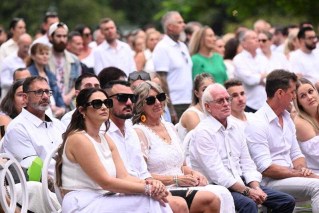Profit over people: It’s time to put aged care in public hands
Victoria now has more than 2000 cases of COVID that have caused 232 deaths among residents of around 87 aged care facilities.
This follows the large cluster in Sydney’s Newmarch House, where 19 people passed away.
This reinforces the idea that older people and those in aged care, in particular, will almost inevitably catch COVID in greater numbers than the young and healthy.
However, closer examination of the numbers in Victoria shows 1 in 23 residents in the private system caught COVID versus 1 in 900 in the public system by the end of last week.
The Aged Care Minister Richard Colbeck doesn’t accept a difference between private and public aged care in the spread of COVID.
Yet the huge difference in infection rates must pose the question why this has happened.

Aged Care Minister Richard Colbeck appears via video link during a Senate inquiry. Photo: AAP
Ever since the Howard government reformed the sector in 1996 it has become a magnet for big business and standards and conditions have deteriorated.
Howard introduced the Aged Care Act, 1997, slashed $1 billion from the aged care budget, reduced government monitoring and removed requirements for a set proportion of government subsidies to be spent on patient care while also reducing the requirement for a set number of qualified staff.
Since then US-based corporations, private equity firms, new foreign investors, and property real estate investment trusts entered the residential aged care market attracted by substantial government subsidies.
At the same time the sector has been rocked by regular scandals; from the kerosene baths disaster in 2000, the 2018 Four Corners investigation into the poor quality of food in aged care and its later investigations into the poor treatment of residents.
This led to the announcement of the Royal Commission into aged care in 2018, and this further uncovered stories of understaffing, overdosing of residents’ medication at Oakden in Adelaide and high numbers of assaults on residents.
And now during the COVID crisis we hear horror stories of dead residents being left in their beds for hours, distressed families having no means of finding out what happened to their loved ones, and significant staff shortages.
All of this is occurring whilst it’s exposed that some owners of private aged care facilities live extraordinarily lavish lifestyles that are the polar opposites of residents in their facilities.
It’s no coincidence that COVID has spread like wildfire through private aged care facilities.

Elderly residents in aged care homes have been massively impacted by the coronavirus. Photo: AAP
It’s not the fault of individual staff – it’s a systemic outcome because of lack of regulation, poor working conditions, and the pursuit of the profit motive at all costs.
For a start, they don’t have the same requirements for skilled staff ratios as state-run facilities.
The Australian Nurses and Midwives Federation has been fighting for years for legislated ratio levels to improve health outcomes for Aged care residents.
Important milestones were the Queensland and Victorian Labor governments legislating mandated ratios in state-run aged care of skilled staff and nurses to residents and non-skilled staff.
But it’s worth noting the vast majority of centres are private.
The next issue is the generally poor working conditions. The interim report of the recent Royal Commission identified the attraction and retention of workers to the aged care industry as difficult due to remuneration and income security.
Unions submitted to the Royal Commission that high levels of casual or part-time employees meant bargaining was difficult meaning working conditions are eroded.
Union members reported feeling stressed, overworked, undervalued and ‘treated as numbers’.
And it’s clear now that people in precarious employment without pandemic leave are more likely to attend work even whilst sick as the alternative is going without pay.
Finally, the pursuit of profit puts the squeeze on service and care to residents.
Unreasonable demands are placed on staff and services get cut.
It should be no surprise that the coronavirus pandemic which is highlighting the inequities in our society has caused the most problems in a sector in which neither residents nor workers are valued or treated well.
The issue is that we undervalue older people and putting the profit motive into aged care has allowed us to also undervalue those who work in the sector driving down wages and conditions resulting in poor conditions for aged care residents.
It’s time to reconsider this sector and bring it back into public hands.
It’s also time to acknowledge that improving working conditions for workers is integral to improving the lives of residents.
Giri Sivaraman is an employment law specialist and Principal with Maurice Blackburn Lawyers. Philippa Stanford is a former senior public servant with the Department of Health and Ageing.








